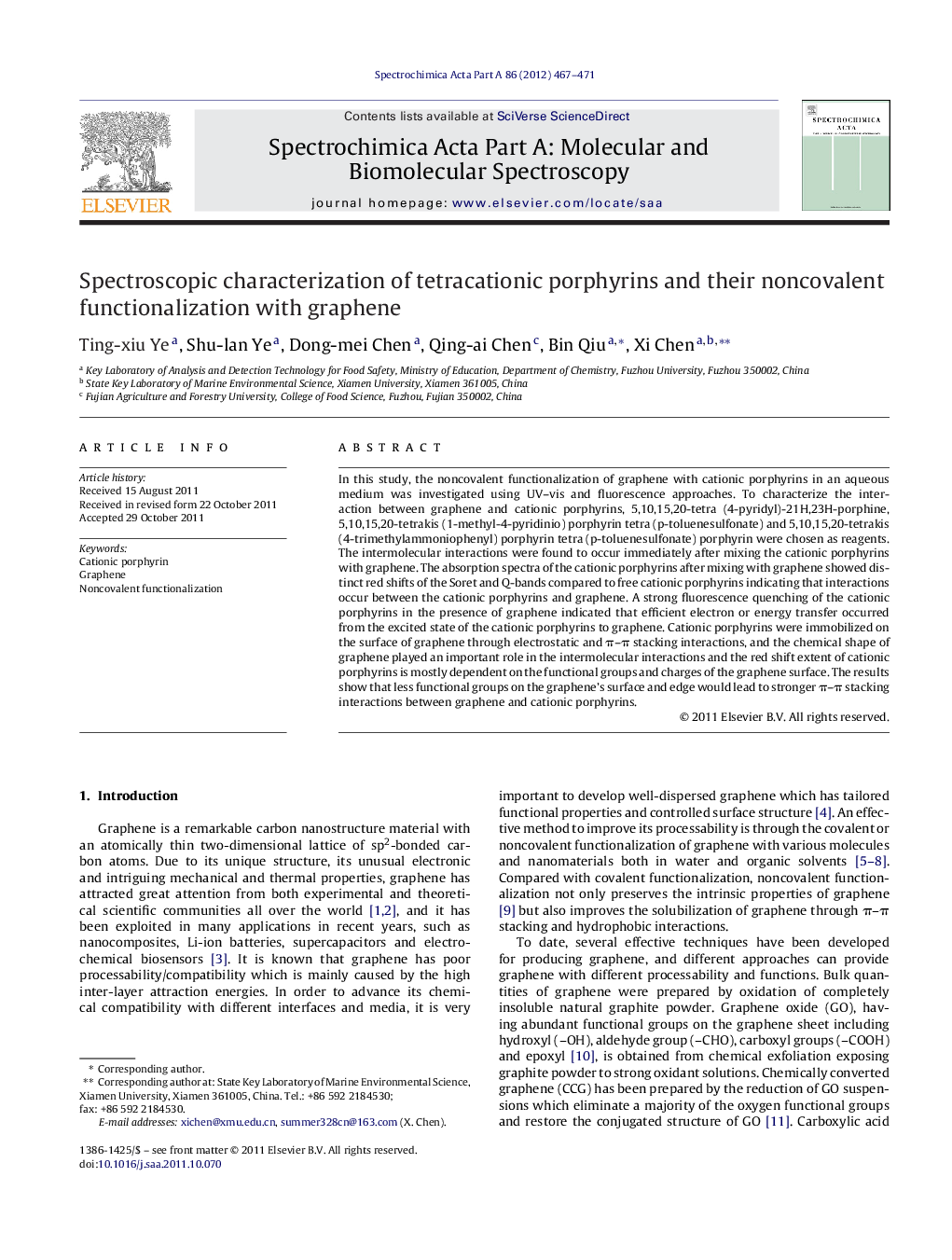| Article ID | Journal | Published Year | Pages | File Type |
|---|---|---|---|---|
| 1232642 | Spectrochimica Acta Part A: Molecular and Biomolecular Spectroscopy | 2012 | 5 Pages |
In this study, the noncovalent functionalization of graphene with cationic porphyrins in an aqueous medium was investigated using UV–vis and fluorescence approaches. To characterize the interaction between graphene and cationic porphyrins, 5,10,15,20-tetra (4-pyridyl)-21H,23H-porphine, 5,10,15,20-tetrakis (1-methyl-4-pyridinio) porphyrin tetra (p-toluenesulfonate) and 5,10,15,20-tetrakis (4-trimethylammoniophenyl) porphyrin tetra (p-toluenesulfonate) porphyrin were chosen as reagents. The intermolecular interactions were found to occur immediately after mixing the cationic porphyrins with graphene. The absorption spectra of the cationic porphyrins after mixing with graphene showed distinct red shifts of the Soret and Q-bands compared to free cationic porphyrins indicating that interactions occur between the cationic porphyrins and graphene. A strong fluorescence quenching of the cationic porphyrins in the presence of graphene indicated that efficient electron or energy transfer occurred from the excited state of the cationic porphyrins to graphene. Cationic porphyrins were immobilized on the surface of graphene through electrostatic and π–π stacking interactions, and the chemical shape of graphene played an important role in the intermolecular interactions and the red shift extent of cationic porphyrins is mostly dependent on the functional groups and charges of the graphene surface. The results show that less functional groups on the graphene's surface and edge would lead to stronger π–π stacking interactions between graphene and cationic porphyrins.
Graphical abstractFigure optionsDownload full-size imageDownload as PowerPoint slideHighlights► Three kinds of graphene samples were prepared by different methods. ► The interactions between graphene and cationic porphyrins were investigated. ► The intermolecular interactions are mostly depends on the chemical shape of graphene.
